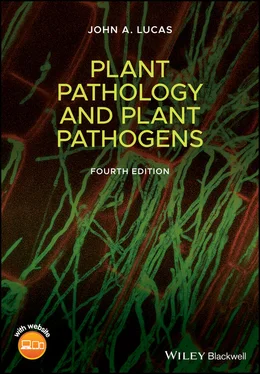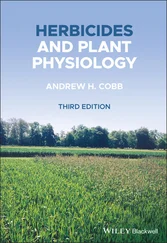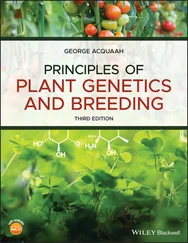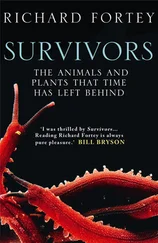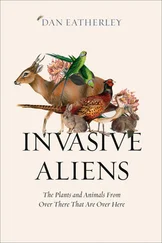1 Ainsworth, G.C. (1981). An Introduction to the History of Plant Pathology. Cambridge: Cambridge University Press.
2 Buczacki, S. and Harris, K. (2014). Pests, Diseases and Disorders of Garden Plants, 4e. London: Harper Collins.
3 Chakraborty, U. and Chakraborty, V. (eds.) (2015). Abiotic Stresses in Crop Plants. Wallingford: CABI.
4 Holliday, P. (1989). A Dictionary of Plant Pathology. Cambridge: Cambridge University Press.
5 Ingram, D.S. and Robertson, N. (1999). Plant Disease: A Natural History. London: Collins.
6 Perry, R.N. and Moens, M. (eds.) (2013). Plant Nematology, 2e. Wallingford: CABI.
7 Press, M.C. and Graves, J.D. (eds.) (1995). Parasitic Plants. London: Chapman & Hall.
8 Putnam, R.J. (ed.) (1989). Mammals as Pests. London: Chapman & Hall.
9 Radosevich, S.R., Holt, J.S., and Ghersa, C.M. (2007). Ecology of Weeds and Invasive Plants: Relationship to Agriculture and Natural Resource Management. Chichester: Wiley.
10 Robinson, J.B.D. (ed.) (1987). Diagnosis of Mineral Disorders in Plants, vol. 1–3. London: HMSO.
11 Schumann, G.L. (1991). Plant Diseases: Their Biology and Social Impact. St Paul, Minnesota: APS Press.
12 Smith, I.M., Dunez, J., Phillips, D.H. et al. (eds.) (1988). European Handbook of Plant Diseases. Oxford: Blackwell Scientific Publications.
13 Van Embden, H.F. and Harrington, R. (eds.) (2017). Aphids as Crop Pests, 2e. Wallingford: CABI.
14 Zimdahl, R.L. (2018). Fundamentals of Weed Science, 5e. San Diego, California: Academic Press.
1 Anderson, P.K., Cunningham, A.A., Patel, N.G. et al. (2004). Emerging infectious diseases of plants: pathogen pollution, climate change and agrotechnology drivers. Trends in Ecology & Evolution 19 (10): 535–544.
2 Bos, L. and Parlevliet, J.E. (1995). Concepts and terminology on plant/pest relationships: toward consensus in plant pathology and crop protection. Annual Review of Phytopathology 33: 269–102.
3 Fears, R., Aro, E.‐M., Pais, M.S., and ter Meulen, V. (2014). How should we tackle the global risks to plant health? Trends in Plant Science 19 (4): 206–208.
4 Fisher, M.C., Henk, D.A., Briggs, C.J. et al. (2012). Emerging fungal threats to animal, plant and ecosystem health. Nature 484 (7393): 186–194.
5 Hodges, R.J., Buzby, J.C., and Bennett, B. (2011). Foresight project on global food and farming futures. Postharvest losses and waste in developed and less developed countries: opportunities to improve resource use. Journal of Agricultural Science 149: 37–45.
6 Jarosz, A.M. and Davelos, A.L. (1995). Effects of disease in wild plant populations and the evolution of pathogen aggressiveness. New Phytologist 129: 371–387.
7 Oerke, E.C. (2006). Crop losses to pests. Journal of Agricultural Science 144: 31–43.
8 Rottstock, T., Joshi, J., Kummer, V., and Fischer, M. (2014). Higher plant diversity promotes higher diversity of fungal pathogens, while it decreases pathogen infection per plant. Ecology 95 (7): 1907–1917.
9 Savary, S., Bregaglio, S., Willocquet, L. et al. (2017). Crop health and its global impacts on the components of food security. Food Security 9: 311–327.
10 Vurro, M., Bonciani, B., and Vannacci, G. (2010). Emerging infectious diseases of crop plants in developing countries: impact on agriculture and socio‐economic consequences. Food Security 2: 113–132.
2 The Microbial Pathogens
It was first necessary to determine if characteristic elements occurred in diseased parts of the body, which do not belong to the characteristics of the body, and which have not arisen from body characteristics.
(Robert Koch, 1843–1910)
Heterotrophic microorganisms, unlike autotrophs, are entirely dependent upon an external supply of organic carbon compounds. The ultimate source of most carbon compounds is green plants, but there are a variety of routes by which microbes can obtain these nutrients.
A large number of microorganisms are decomposers. These organisms utilize substrates in dead tissues and their activities eventually lead to the disappearance of plant and animal remains. Such decomposers play a key role in the ecosystem by releasing nutrients which would otherwise remain locked up in plant litter. Some microbes have, in addition, an ability to parasitize living plants; if, during invasion of the plant, they kill host cells this ensures a supply of dead tissues on which they can continue to grow. Other microorganisms are only able to obtain nutrients from living host cells, and establish more balanced relationships which may be of mutual benefit. The effects of microbes on plants therefore vary from severe damage and even death, to diversion of nutrients, to associations in which both partners gain some advantage. Hence, heterotrophic microorganisms are involved in a variety of ways in the movement of fixed carbon between different trophic levels in the ecosystem.
A comprehensive analysis of plant disease caused by microorganisms requires several different types of information. First, the causal agents must be identified. However, the usual criteria employed for distinguishing between microbial species are of limited value when dealing with microorganisms isolated from plants. Different isolates of the same species may vary widely in their ability to cause disease. It is important to understand the genetic basis of such variation, and the corresponding variations in the plant's response. Second, the nature of the host–parasite relationship needs to be considered; the biology of infection, sources of nutrients, the basis of damage to the host, and the effects of the environment. The diversity of relationships is enormous, but identifying some common features is helpful in providing basic guidelines for the control of contrasting types of pathogens.
Pathogens and Pathogenesis
Considerable confusion surrounds the terms pathogenand parasite. While they are generally used to describe microbial disease agents, in particular the fungi, bacteria, and viruses, the distinction between the two terms has often been overlooked. They are not synonymous; a parasite is an organism having a particular type of nutritional relationship with a host, while the term pathogen refers to the ability of an organism to cause disease. They may be defined as follows.
Parasite: an organism or virus living in intimate association with another living organism (host) from which it derives some or all of its nutrients, while conferring no benefit in return.
Pathogen: an organism or virus able to cause disease in a particular host.
The allied term pathogenesisdescribes the complete process of disease development in the host, from initial infection to production of symptoms.
At first sight, the distinction between a parasite and a pathogen might appear subtle; indeed, in many cases the parasitic activities of an organism automatically lead to it being a pathogen as well. The diversion of nutrients from the host will cause some metabolic stress which will normally be expressed as disease. However, in other host–microorganism associations this stress may be offset by the microbe contributing nutrients in return. This is the case with root nodules of legumes, where the bacterium Rhizobium obtains carbohydrates from the host but also fixes atmospheric nitrogen, some of which the host subsequently utilizes. Mycorrhizal fungi infect plant roots but actually stimulate growth by assisting the uptake of scarce nutrients, especially phosphates, from the soil. The definition of a parasite given above takes account of situations such as these.
Where the invading microbe confers some beneficial effect, the term symbiosishas been used. As originally conceived, symbiosis (literally = living together) referred to any intimate or close association between organisms, irrespective of benefit or harm, and was subdivided as shown in Figure 2.1.
Читать дальше
